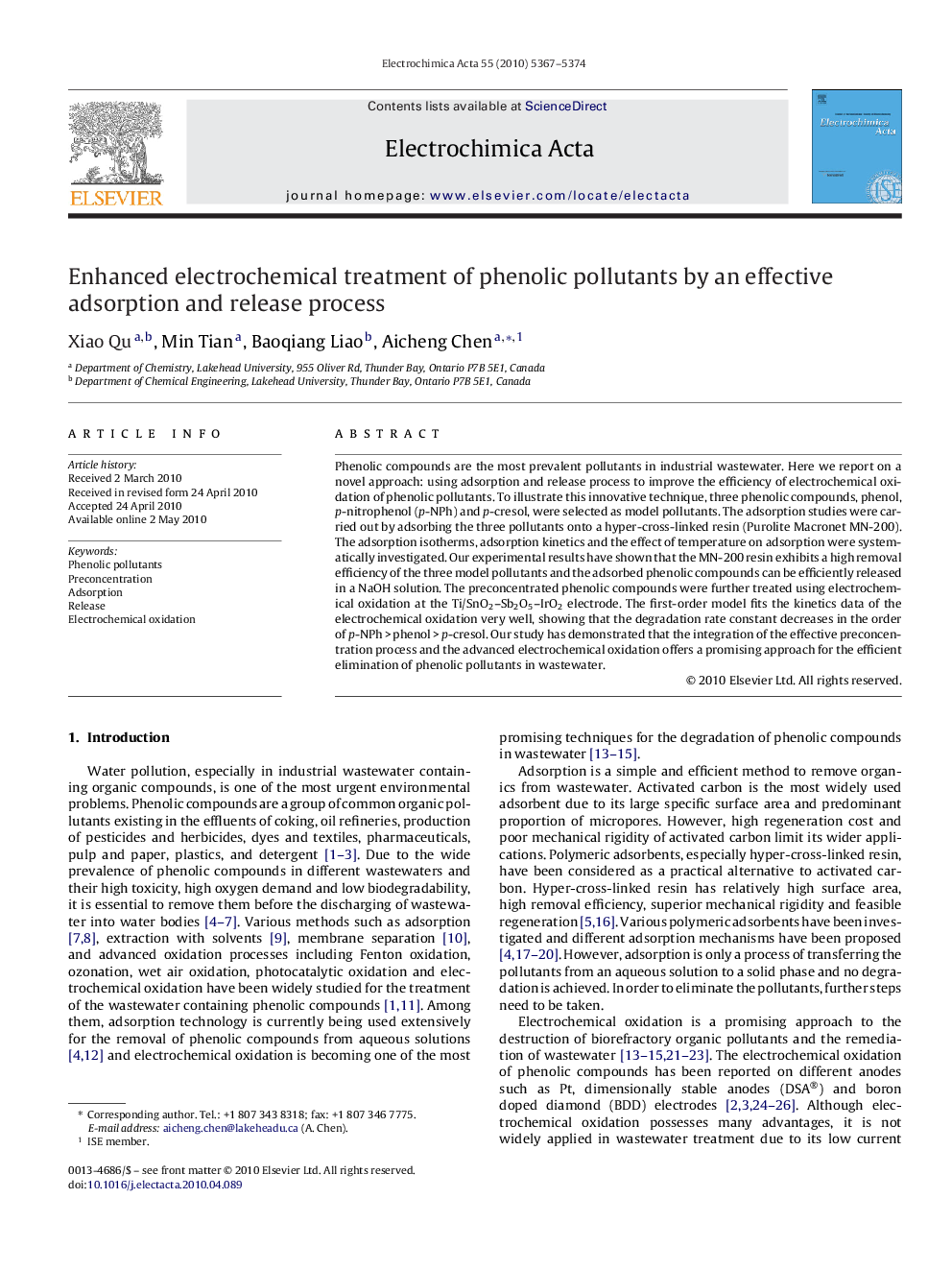| Article ID | Journal | Published Year | Pages | File Type |
|---|---|---|---|---|
| 191342 | Electrochimica Acta | 2010 | 8 Pages |
Phenolic compounds are the most prevalent pollutants in industrial wastewater. Here we report on a novel approach: using adsorption and release process to improve the efficiency of electrochemical oxidation of phenolic pollutants. To illustrate this innovative technique, three phenolic compounds, phenol, p-nitrophenol (p-NPh) and p-cresol, were selected as model pollutants. The adsorption studies were carried out by adsorbing the three pollutants onto a hyper-cross-linked resin (Purolite Macronet MN-200). The adsorption isotherms, adsorption kinetics and the effect of temperature on adsorption were systematically investigated. Our experimental results have shown that the MN-200 resin exhibits a high removal efficiency of the three model pollutants and the adsorbed phenolic compounds can be efficiently released in a NaOH solution. The preconcentrated phenolic compounds were further treated using electrochemical oxidation at the Ti/SnO2–Sb2O5–IrO2 electrode. The first-order model fits the kinetics data of the electrochemical oxidation very well, showing that the degradation rate constant decreases in the order of p-NPh > phenol > p-cresol. Our study has demonstrated that the integration of the effective preconcentration process and the advanced electrochemical oxidation offers a promising approach for the efficient elimination of phenolic pollutants in wastewater.
